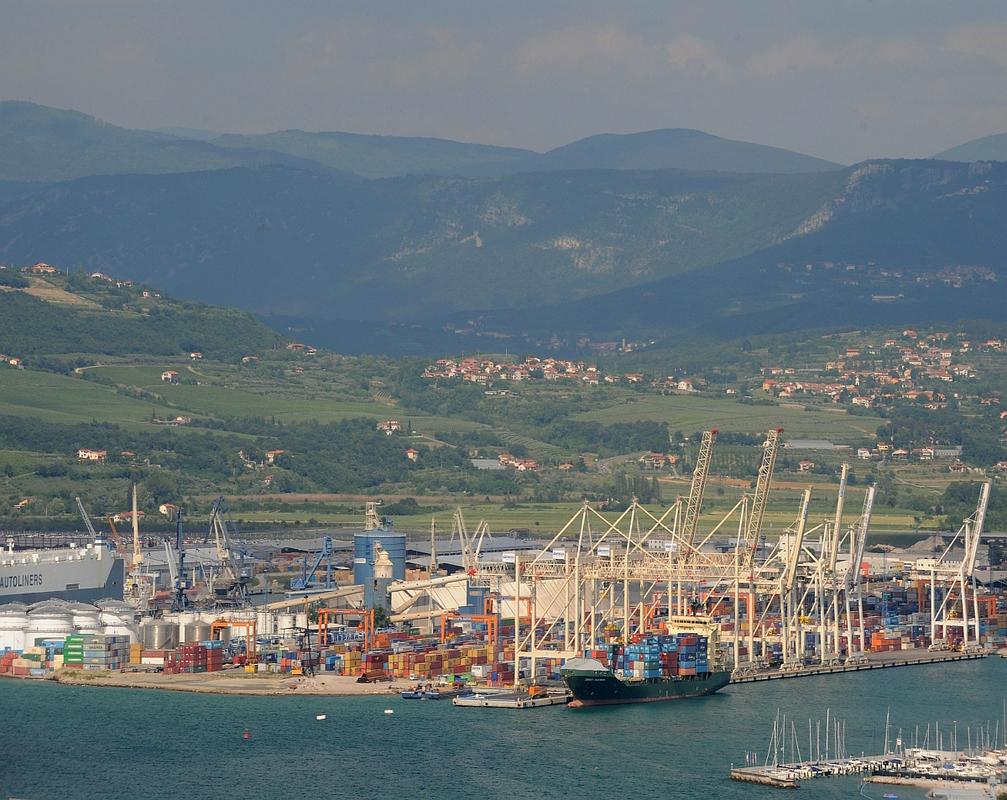
On some spring and summer days, thousands of visitors from around the world fill the narrow streets in the old part of Koper, the largest of Slovenia’s coastal town. Hundreds of others head deeper into Slovenia, visiting Ljubljana and even Lake Bled beneath the Julian Alps.
The tourists arrive on large cruise liners, about 50 of which now stop at the Port of Koper every year. This is just the latest way that the port is living up to its nickname as “Slovenia’s window to the world.”
After World War II, Yugoslavia hoped to gain control of Trieste, a major Italian port. Instead, the country was awarded territory south of the city – consisting primarily of old fishing towns, including the former Istrian capital of Koper. Slovenian authorities, however, were determined that the republic should have a port of its own, and the decision was made to create a new, modern Port of Koper.
It wasn’t an entirely new role for the town. The town already had a port when it was a part of the Republic of Venice, and was even briefly designated an Imperial Port when it came under Hapsburg rule. By the 20th century, however, its role commercial role was marginal, having been eclipsed by nearby Trieste.
In the 1950s, the changed political circumstances made the renaissance of Koper as a port possible. In 1957 a new company was founded and a dredger was used to deepen the port, allowing it to receive large cargo ships for the first time. A new era had begun.
Despite intra-Yugoslav competition from Rijeka, a long-established port in nearby Croatia, the Port of Koper experienced rapid growth in the 1960s. Its management focused not just on the Slovenian market, but also built facilities that allowed Koper to develop into one of the most important ports serving all of Yugoslavia, as well as several countries in Central and Eastern Europe, from Austria to Czechoslovakia. To facilitate the increasing traffic, a new rail link was built in 1967 connecting the port directly to Ljubljana and various cities beyond.
Sustained growth followed in the coming decades, but the biggest boom for the port came after Slovenia’s independence. The revived national economy and the fall of the Iron Curtain allowed the port to expand its facilities, build new, specialized terminals, and become the dominant port for container traffic heading for several Central European countries. Each day, trucks and trains headed for Austria, Hungary, the Czech Republic, Slovakia, Poland, and beyond left the port, effectively compensating for the Yugoslav markets lost during the break-up of the country. In 2007, the annual traffic at the port exceeded 15 million metric tons – compared to the less than a million metric tons per year recorded in the 1960s.
In addition to providing opportunities for expansion, the European Union has also intensified competition between the three principal North Adriatic ports – Koper, Rijeka, and Trieste. All three now compete for the same markets, and both Rijeka and Trieste are investing in infrastructure that will better enable them to compete with Koper.
Slovenian authorities are deeply aware of the mounting competition and are not only considering building a new pier, but are also currently deepening the port’s waters with the help of a dredger. This will enable the port to receive even bigger ships – both cargo and cruise liners --, and solidify the former fishing town’s status as Slovenia’s window to the world.

































































